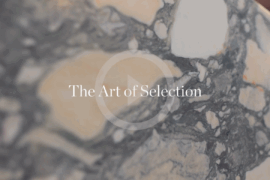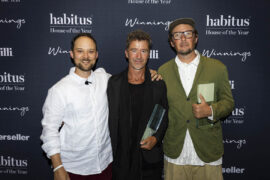A new tool developed from a UNSW associate professor and Cox Architecture is helping the Architecture industry move work to the digital world

April 8th, 2020
The Coronavirus pandemic has forced many industries in Australia to move their operations online as employees isolate themselves and work from home to help ‘flatten the curve’. With the limited options available within the architecture industry for remote collaboration, architects and designers are finding it difficult to transition to a remote set-up.
However, a new tool developed by a UNSW associate professor along with Cox Architecture is helping architecture industry stakeholders move their work into the online space in a collaborative and responsive environment.
UNSW associate professor and the director of the Computational Design (CoDe) degree, M. Hank Haeusler observes that the current COVID-19 crisis and the push to work from home highlight the future of industries needing to be more online and more digital.
“For some professions, it’s easy to continue online collaborations if you need to work remotely for an extended period. In architecture, design and engineering, it’s more difficult.”
In a regular architectural practice, architects work on an application that stays on their desktop. In a remote work situation, both parties need the application on their computers to be able to work together and share files. In the absence of infrastructure, people in the industry find it difficult to work remotely, he explained.
Partnering with Cox Architecture, Haeusler co-developed Giraffe Technology that uses the digital medium of a website to remove these barriers – anyone with access to the internet can model and design directly on the web browser on a map of the world.
Similar to a Google Doc, Giraffe allows for multiple people to collaborate and work on a single design at once, from anywhere in the world. The tool uses computational design features to allow architects to automate design processes and model 3D designs.
“Computational design enables architecture to be modelled through programming. So instead of drawing a line, you write a computer programme that defines the line. The challenge is that many architects do not have an interest in learning programming skills and therefore cannot access these tools.”
Giraffe bridges this gap as it is a platform like UBER.
“On one side of the platform, you’ve got computational designers that can upload their computational design programs that can automate anything, such as solar analysis. On the other side, Giraffe’s graphic user interface enables architects and designers to use the programmes without needing programming skills.”
For a more streamlined remote team collaboration experience, the tool allows users to invite collaborators to their projects by email and use the chat function in Giraffe to design and communicate in the one channel. Giraffe also allows easy access to calculations such as the floor space ratio, or what carbon emissions the design will produce.
According to Haeusler, collaboration – locally or globally – is not a big concern anymore; even infrastructure doesn’t matter so long as users have a laptop with an internet connection. Giraffe, he says, has brought about a democratisation and demonetisation of expert skills.
“Typically, architecture design expertise is expensive and someone in remote Australia wouldn’t have access to the same engineering or architecture services in their proximity as someone in the Sydney CBD. Giraffe breaks that wall down and gives everyone the same access to high expertise tools because the skills inner city firms have can be transferred to the web.”
“The COVID-19 response has highlighted the need for the industry to be more responsive to digital transformation. Giraffe as a tool offers that already by being an online platform and by allowing remote working in a situation like the one we’re experiencing now.”
Originally posted on Architecture & Design.
If you liked this article, we think you’d enjoy an article Dowel Jones introduces the Design From Home competition.
INDESIGN is on instagram
Follow @indesignlive
A searchable and comprehensive guide for specifying leading products and their suppliers
Keep up to date with the latest and greatest from our industry BFF's!

CDK Stone’s Natasha Stengos takes us through its Alexandria Selection Centre, where stone choice becomes a sensory experience – from curated spaces, crafted details and a colour-organised selection floor.

London-based design duo Raw Edges have joined forces with Established & Sons and Tongue & Groove to introduce Wall to Wall – a hand-stained, “living collection” that transforms parquet flooring into a canvas of colour, pattern, and possibility.

With Steelcase having reopened its refreshed WorkLife Showroom in Singapore this year, we spoke to Navedita Shergill about some key workplace macro shifts identified in their research.

The Asia Pacific and Middle East regional leader for Gensler’s Digital Experience Design (DXD) practice discusses technology, AI, Scotland and the meaning of human-centred design in this episode of Stories Indesign.
The internet never sleeps! Here's the stuff you might have missed

Winners of the 2025 Habitus House of the Year and Editor’s Choice Award respectively, Anthony Gill and Jason Gibney join the podcast to discuss the state of housing in Australia today.

CDK Stone’s Natasha Stengos takes us through its Alexandria Selection Centre, where stone choice becomes a sensory experience – from curated spaces, crafted details and a colour-organised selection floor.

Hiwa, the University of Auckland’s six-storey recreation centre by Warren and Mahoney with MJMA Toronto and Haumi, has taken out Sport Architecture at the 2025 World Architecture Festival. A vertical village for wellbeing and connection, the project continues its run of global accolades as a new benchmark for campus life and student experience.